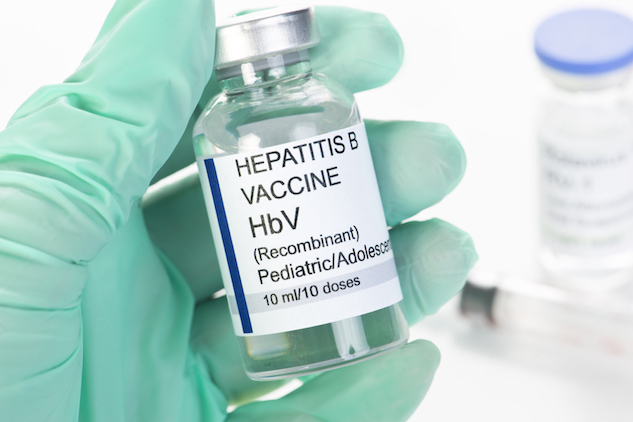
This article is not meant to diagnose or provide medical advice—that responsibility lies with physicians. The author is not a licensed medical professional.
That’s an excellent question.
In March, the National Academies of Sciences, Engineering and Medicine released an aggressive strategy for eliminating viral hepatitis as a U.S. public health problem by 2030. Doing so would save 20,000 lives per year—the number of people who die from hepatitis B and C in the U.S. annually. That’s more than those who perish from AIDS. Sounds like a no-brainer, right?
But squashing the virus is easier said than done. Eliminating hepatitis B and C would “require a significant departure from the status quo,” according to the report. Despite the disease’s prevalence (about 1.3 million people in the United States have chronic hepatitis B, and about 2.7 million have chronic hepatitis C) this chief cause of liver cancer hasn’t been a priority in the U.S., according to Brian Strom, chair of the committee that carried out the study and Rutgers University professor and chancellor. “Despite being the seventh leading cause of death in the world and killing more people every year than HIV, road traffic accidents, or diabetes, viral hepatitis accounts for less than 1 percent of the National Institutes of Health research budget,” he says in a report press release.
Awareness and stigma stand in the way of making hepatitis a rare disease. Often, the groups most stricken with the disease are difficult to reach for health screenings that would help them know their statuses, including immigrant populations, the uninsured and those who have substance abuse problems or have been imprisoned. However, that certainly doesn’t account for all the at-risk populations, which also include baby boomers, veterans, men who have sex with men. and Asian and Pacific Islanders, who account for an outsized portion of those living with hepatitis. Still, according to the CDC, one in 12 Asians is living with the disease but may not know about it. Pregnant women are also at risk, since an estimated quarter of Americans living with hepatitis B were infected in early childhood through blood-to-blood contact with their mothers (who may have been unaware of their own positive statuses).
In a video from the Hepatitis B Foundation’s #justB campaign—May is hepatitis awareness month—Alan shares his diagnosis story and the disease’s prevalence in his family. “My family only knew my uncles died from liver cancer, because the doctors never say a person dies from hepatitis B,” he says.
Hepatitis has been called a silent epidemic—in part because those who have the virus can be symptom-free and won’t look or feel sick. Stigma also leads to that silence. Since the disease can be caused by drug use or unprotected sex, and, in general, liver diseases are associated with substance use, those diagnosed can be hesitant to talk about it. They may also fear repercussions from family and neighbors. In another #justB video, Kim shares the story of her father, who kept his disease secret. “He knew he had hepatitis B for many years before he was diagnosed with liver cancer. It’s pretty common in the Asian communities, but no one talks about it. He was the same way. He never told us he had it … maybe because he thought people would gossip and treat us differently. They would be afraid to shake his hand, share our food, or even be in the same room with him,” she says.
Because stigma encourages silence, “it could undo the best viral hepatitis elimination campaign,” the report acknowledges.

Photo by Sherry Yates Young/Shutterstock
Awareness and stigma aside, the availability of vaccines and treatment, the powerful pharmaceutical lobby, and the controversy around needle exchanges are further obstacles to sending hepatitis the way of polio in the U.S.
There’s an effective vaccination for hepatitis B—and it’s being administered. Since 2013, about 90 percent of U.S. children have been immunized, but only about a quarter of American adults have been immunized. Changing that may mean treating hepatitis vaccines like flu shots and making them widely available at pharmacies across the country.
Although a vaccine isn’t available for hepatitis C, new treatments cure the vast majority of patients. Healing everyone with chronic hepatitis C would reduce new infections and reduce hepatitis C deaths; however, there won’t be a generic (non-patented) treatment available before 2029. Treatments would be unavailable to all but the wealthiest patients, or be budget busting for government programs like Medicare and Medicare. Getting effective antivirals en masse sooner would mean the government would have to license the patents, something critics see as a slippery slope that would lead to further licensing—at a great expense and undermining the drive for pharmaceutical research and development.
Expanding needle exchanges and confronting American opioid addictions is another hurdle in eliminating hepatitis. People who inject drugs account for 75 percent of the 30,500 new hepatitis C infections every year. Providing clean syringes for these users would prevent blood-to-blood contact. And, of course, providing opioid replacement medicines, like methadone, to relieve the symptoms of withdrawal, can decrease underlying addictions. “Syringe exchange and opioid agonist treatment are cornerstones of viral hepatitis elimination. But these services are least available in the places that most need them, rural areas with an injection opioid problem,” the report attests. For example, rural and suburban areas account for about half the people in the U.S. who inject drugs, but they only have 30 percent of the country’s exchange programs and distribute only eight percent of the total syringes.
The U.S. isn’t alone in recognizing the severity of the hepatitis epidemic. The World Health Organization says the number of people dying of hepatitis is rising, and most of the 325 million infected worldwide are unaware they have the virus. “Viral hepatitis is now a major public health challenge that requires an urgent response,” the WHO’s director general Margaret Chan said.
Based in Albuquerque, New Mexico, Ashley M. Biggers is a freelance writer who covers travel, art and health.